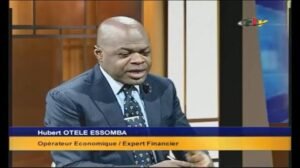
Did the Bestinver’s liquidation procedure comply with current legislation? What legislation was this? The Insolvency Act?
If I am not mistaken, the Insolvency Act dates from 1924 or 1934. It is a law which codifies the liquidation procedure in South Africa. This procedure has existed for a long time and has always been applied.
Judicial liquidation is a collective procedure, while judicial recovery is a preventive measure. However, judicial recovery must be implemented before liquidation. In this present case, the judicial recovery did not really take place, although it would have left the company in difficulty to examine different cash flow solutions. The company can accept or refuse these solutions, which aim to provide it with the liquidity necessary to redress its situation within a specific period. This is what legal recovery is all about. When the company is no longer able to meet its cash flow commitments, it then enters the liquidation phase.
In this specific case, a proposal was made to Bestinver during the receivership, but it was unacceptable for the company, because it would have strangled it financially and prevented it from honoring its other commitments. This is how Bestinver found itself in compulsory liquidation, a procedure which, in my opinion, was not respected in accordance with the legislation in place.
The insolvency of a company is established by precise legal criteria. However, was Bestinver really in a situation of insolvency? No, because it had real estate assets that could be monetized very quickly, allowing it to honor the amount of credit taken out to finance these same assets. In addition, at least five real estate assets, worth ten times the value of the loan, had been given as collateral. Even if, extraordinarily, the initial guarantee had been insufficient, it would have been useless to further increase the guarantees with five real estate assets already representing ten times the debt. In terms of guarantee, the standard imposes a ratio of 1.5 to 2 times the amount borrowed, and not ten times.
If we now examine the way in which the liquidators managed the liquidation of the assets, several elements raise questions:
– No clear information has been communicated about their work, although they are required to inform all stakeholders, including Bestinver.
– The seized goods should have been sold at a value allowing creditors to be immediately reimbursed and the balance returned to the company in liquidation, which was not respected.
– The liquidation period seemed abnormally short.
– A criminal element could be raised here: most of the goods were sold below their value. However, a sale below the value necessarily implies the agreement of the company which initiated the liquidation, in this case we talk of the First National Bank. If the bank accepted a lower price, this would have raised questions.
All these elements demonstrate that the procedure was not respected. Moreover, even the judicial recovery procedure itself appears to be marred by irregularities.
Finally, the conditions for granting credit are just as questionable. South African legislation requires proportionality between the loan amount and the guarantees provided. However, in this specific case, there was a manifest, even gross, disproportion: the guarantee covered ten times the amount of the debt, which is totally out of the ordinary.
Can we speak of a mafia plan in this affair?
As a financial expert, I look at the texts and the figures, and I don’t talk about the mafia. However, Bestinver professionals and experts. It took out a loan and provided a guarantee far bigger than what was required. This guarantee even covered the risk that emerged with the Covid-19 pandemic.
It was at that moment that FNB Bank, under its new management, immediately called in the guarantees and demanded for their reimbursement. However, this constituted a clear violation of the credit agreement, which should have been denounced by Bestinver’s lawyers. They should have reacted by pointing out that this requirement violated the principles of proportionality provided for by the applicable regulations.
At this point, we must recognize certain cunning on the part of the bank. I am not talking about the mafia, but in business, there are no gifts. Furthermore, we received information that certain influential people could not accept that Bestinver, owned by Mr Danpullo, a foreigner, would become the largest private property owner in South Africa after banking institutions and insurance companies.
These actors therefore had an interest in causing a rapid and immediate liquidation of the assets in order to allow their acquisition by others. This is where another problem appears: a financial cavalry maneuver. The liquidator sold these goods to buyers who acquired them below their value, before quickly reselling them at a capital gain. This is the very principle of financial cavalry: using several successive intermediaries, like screens, until reaching a buyer in good faith, legally untouchable.
I will not call it a mafia, but rather a blatant violation of the law, exploiting the lack of expertise of the injured party. Furthermore, in a country where economic and financial levers are still predominantly held by whites, and where Mr. Danpullo, a black man, owned significant real estate assets coveted by the local economic system, the racial dimension cannot be ignored.
Yes, we can talk about racism. The issue here is that a foreigner, in addition to being Black, held attractive assets in an ecosystem dominated by Whites. This is how we can, perhaps, evoke a form of mafia. There is clearly a dishonest maneuver here, based on a biased reading of the texts.
Is the initiative to seize the accounts of South African companies in Cameroon, MTN and Chococam, regulated by law?
OHADA establishes its procedures through the Uniform Act relating to simplified recovery procedures and enforcement methods. I think it is article 34 which provides that when a person owes you money, you can seize your debt, in the hands of a third party to whom they themselves owe money. However, this uniform act of OHADA is not sufficient. This is where Baba’s lawyers, conscious or not of this issue, demonstrated great ingenuity. The principles and case law applicable to this situation exist, but we will not fully disclose them here, as this is our strategy.
The links between FNB, MTN and Chococam are clearly established. How ? These companies belong to consolidated groups, and their consolidation scope makes it possible to analyze their financial and capital relations. These groups take care of their accountancy so as to consolidate their accounts, and thus defining their financial relationships, their cross-actions and their common interests.
The main institutional investor in South Africa is the Public Investment Corporation (P.I.C), a public pension fund. This fund is a shareholder of MTN Group, a shareholder of First Rand, which owns First National Bank (FNB) 100%. Furthermore, FNB is also a shareholder of Tiger Brands, the majority shareholder of Chococam. Thus, by analyzing the scope of consolidation, we legally and financially establish these links through the percentage of P.I.C. participation in each of these companies.
MTN claims to have no relationship with FNB. However, the court recognizes that a commercial and financial relationship is required. Nevertheless, such a link does indeed exist between MTN Group and FNB, because they have the same main shareholder and have carried out several joint commercial and financial activities. FNB notably financed MTN on the basis of this common relationship.
Let’s take a simple example: if there are three of us talking here and we have cross-business ties, even if I don’t have a direct link with one of you, there is still an interconnection that allows us to establish a relationship. This is called cross-ownership. In other words, “the friend of my friend is my friend”. If tomorrow one of us recommends the other for funding, there is a good chance that it will be accepted on the basis of the common relationship.
Thus, the commercial and financial relationship between FNB and MTN is clear and indisputable, with proof and precise dates attesting to transactions and financial instruments between them.
Returning to the OHADA Uniform Act on simplified recovery procedures and enforcement routes, we rely on this text and on case law to demonstrate that a commercial and financial link does indeed exist. The lawyers may not have succeeded in establishing it yet, but we have. We have defined the scope of consolidation allowing us to legally argue that the Supreme Court will not be able to reject this reality. The jurisprudence is already established on this point, and no matter how long it takes, Bestinver will normally win this case.
What should be taken note of?
When you are a shareholder of a company, you expect dividends and financial results to be remunerated. P.I.C is therefore awaiting the financial results of MTN and Tiger Brands.
Let’s take the year 2023: MTN Cameroon achieved a net profit of 126 billion FCFA. This profit will go back to the MTN group, which in turn will remunerate P.I.C, just as FNB and First Rand redistribute their profits.
Since MTN owes us money, can we use its profits in accordance with the principle of OHADA and constant dividends? Yes !
However, MTN claims these funds come from Mobile Money, saying it is customers’ money and is elusive. To defend this position, MTN requests COBAC and BEAC, who confirm that these funds cannot be seized.
However, if there is no connection between turnover and profits, then provide us with the account statements for the last five years to examine these flows! Fund transfers leaving Cameroon to South Africa should also be blocked to ensure fair compensation.
An unacceptable loss
Beyond the legal and financial aspects, there is a problem of economic and financial patriotism. Whether we like Danpullo or not, how can we explain the loss of 300 billion FCFA for a debt of 22 billion? Who can understand this?
We demanded 243 billion FCFA, and current seizures total 143 billion. There is still 100 billion to recover. Meanwhile, our authorities receive the CEOs of MTN, who came to Cameroon to collect the money and leave with it.
Economic patriotism in question
Beyond any legal and financial analysis, this affair raises a crucial question: economic patriotism.
All countries in the world protect their investors abroad, because it is part of the Gross National Product (GNP). The latter takes into account all the wealth produced by national investors abroad. Conversely, Gross Domestic Product (GDP) only considers the internal production of a country.
This distinction is essential to assess the wealth and production capacity of a country, in order to guarantee investor confidence. This is why major nations protect their foreign investments. Take the example of France: within the Ministry of Finance, there is a department entirely dedicated to French investments abroad. A special service monitors and defends these private investments.
China, in its part, has built its economic power on its external revenues. It is these surpluses that allow it to hold a large portion of US Treasury bonds.
What message are we sending to the world. We want to attract foreign investors to Cameroon, but if we do not even protect our own nationals, how can we convince these investors that they will be protected?
Cameroon could become a launching pad for investments in South Africa, Gabon or elsewhere. But if an investor sees what happened to Danpullo, he will immediately understand that he will not benefit from any legal or economic protection.



